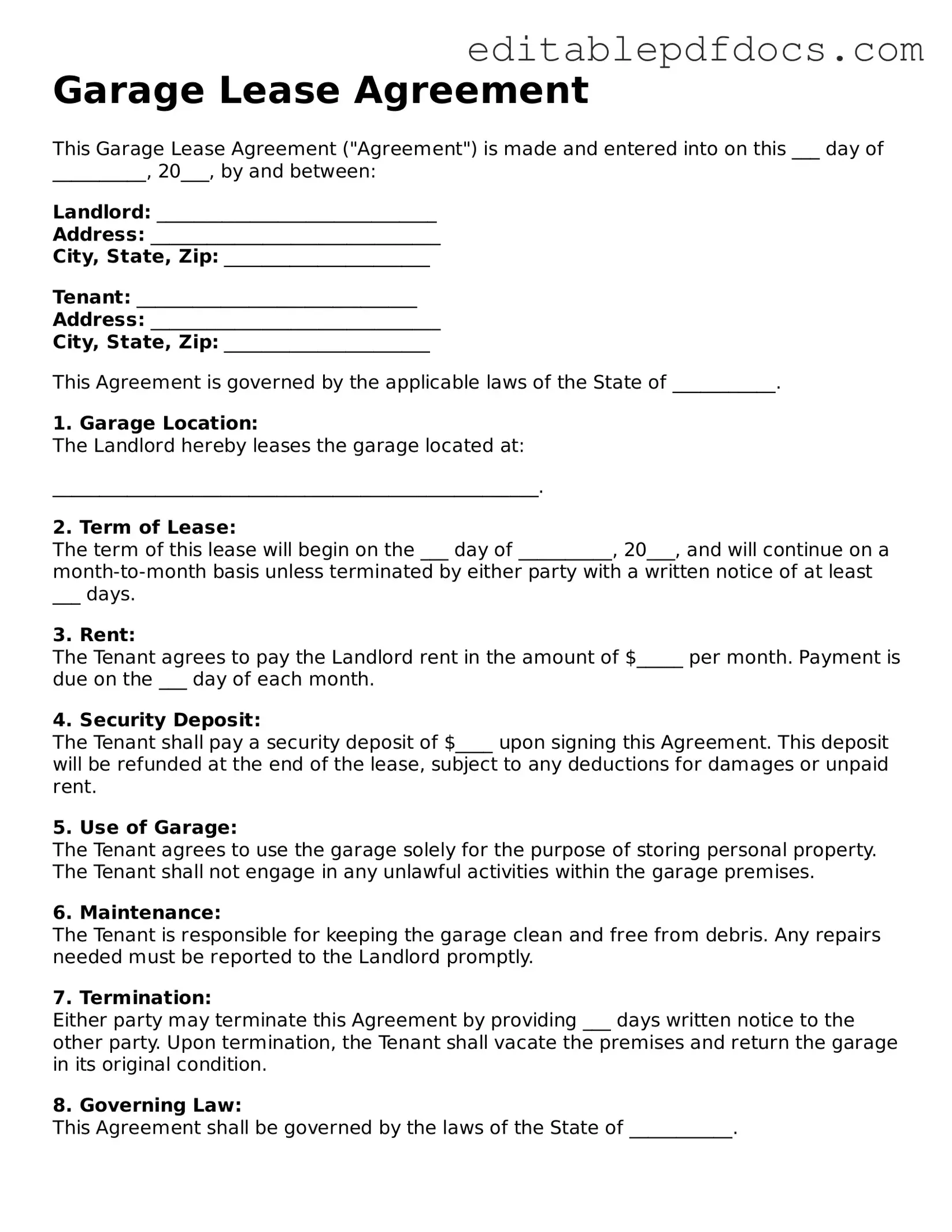Filling out a Garage Lease Agreement can seem straightforward, but many people make common mistakes that can lead to complications down the line. One of the most frequent errors is failing to include all necessary details about the property. This includes the full address, unit number, and any specific features of the garage. Omitting this information can create confusion and disputes later.
Another common mistake is not specifying the lease term. A clear start and end date is crucial. Without this information, both parties may have different expectations about how long the lease lasts. It is essential to agree on the duration to avoid misunderstandings.
Many individuals also overlook the rental amount. It’s important to state the exact amount due, along with the payment schedule. Some people forget to mention whether the rent includes utilities or maintenance fees. This can lead to disputes regarding what is covered and what is not.
Failure to include security deposit details is another mistake. Specify the amount of the deposit, the conditions for its return, and any deductions that may apply. This protects both the landlord and the tenant and ensures transparency.
People often neglect to read the terms and conditions thoroughly. This can result in misunderstandings about responsibilities for repairs and maintenance. Clearly outline who is responsible for what to avoid conflicts later.
Another error involves not including a clause for termination. This clause is essential for both parties to understand how to end the lease agreement properly. Without it, one party may feel trapped in an unwanted situation.
Some individuals fail to sign the document properly. Both parties must sign and date the lease for it to be legally binding. An unsigned agreement may not hold up in court, leading to significant issues.
Not keeping a copy of the signed agreement is a mistake many make. Both parties should retain a copy for their records. This ensures that everyone has access to the terms agreed upon.
Lastly, people often underestimate the importance of including any special provisions or modifications. If there are specific agreements made verbally, they should be documented in writing. This can prevent future disputes and provide clarity on expectations.
